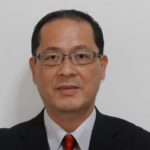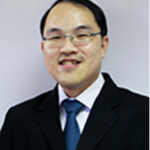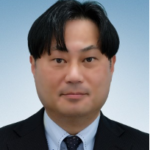
Masakazu Urade
SOCIONEXT Inc., Japan
RF-CMOS Technology Advances IoT
Abstracts:
Recently, the number of IoT devices are increased, which adapted narrow band wireless technologies such as BLE, LPWA and so on. These intelligent IoT device has RF wireless technologies to communicate to other system, and the digital circuit technologies with low power consumption. We will introduce Socionext’s RF-CMOS technology to address these requirements. And as an example, we will explain out active tag solution, “ZETag”.
Keywords: IoT; RF-CMOS; Wireless
Biography
Masakazu Urade had been working at embedded software for LSIs and many products in Panasonic. He has experiences worked with Microsoft to develop OS for Panasonic 32-bit CPU, later on worked with China Academy of Science to develop embedded linux for Panasonic 32-bit CPU.
Now, he is Deputy Director, Connected Solution Team, IoT & Radar sensing BU, Socionext Inc. and also Director, ZETA alliance Japan.
Currently his mission is business development of IoT & Radar sensing LSI. Especially he is interested in Narrow band IoT device., ZETA alliance Japan.

Assoc. Prof. Dr. Chalie Charoenlarpnopparut
Sirindhorn International Institute of Technology, Thammasat University, Thailand
Planning the Future of Thai Electricity Generation and Smart Grid Development
Abstracts:
Since 2007, Thailand electricity generation planning has been overwhelming with flaws and prediction errors. Until this moment, there is still no clear direction on how it can meet the international commitment to reduce CO2 footprint by 20-40% in 2030 and becoming a CO2-neutral country by 2050. With the rising price of electricity, Thai government still struggles deeply by subsidizing electric bills for the poor and keep solving the problem on the superficial basis. In this presentation, Thailand electricity generation planning problem will be analyzed to the structure level. The research result for future of Thailand electricity plan to meet the decarbonization target will be explained with immediate action recommendation. It has been discovered that more than 250 GW of solar power capacity and 50 GW of grid energy storage would be required in 2050 to meet the CO2 target. The problems of high-level renewable generation integration to the grid and perhaps new energy market model are needed to be studied. Finally, other related future research topics will be proposed to challenge the audiences and call for participation.
Keywords:
Energy planning; Power Development Plan; Smart Grid; Carbon Neutrality
Biography
Dr. Chalie Charoenlarpnopparut is Associate Professor at School of Information, Computer, and Communication Technology (ICT), Thammasat University, Thailand. He graduated the bachelor degree (1st Class Honor) in Electrical Engineering, Chulalongkorn University, Bangkok, Thailand, the master degree in Electrical Engineering, The Pennsylvania State University, University Park, PA, USA as well as the doctor degree. Now he is a Vice-Rector for Academic Affairs at Thammasat University, Thailand.
Research Interests:
Multidimensional systems and signal processing, Robust control, Image processing, Wavelet and filter bank, Signal processing for communication, Convolutional code design.

Prof. Dr. Masashi Unoki
School of Information Science, JAIST, Japan
Audio/Speech Information Hiding based on Human Auditory Characteristics
Abstracts:
Audio information hiding (AIH) has recently been focused on as a state-of-the-art technique enabling copyrights to be protected and defended against attacks and tampering of audio/speech content. This technique has aimed at embedding codes as watermarks to protect copyrights in audio/speech content, which are inaudible to and inseparable by users, and at detecting embedded codes from watermarked signals. It has also aimed at verifying whether it can robustly detect embedded codes from watermarked signals (robust or fragile), whether it can blindly detect embedded codes from watermarked signals (blind or non-blind), whether it can completely restore watermarked signals to the originals by removing embedded codes from them (reversible or irreversible), and whether it can be secure against the publicity of algorithms employed in public or private methods. AIH methods, therefore, must satisfy some of the five following requirements to provide a useful and reliable form of watermarking: (a) inaudibility (inaudible to humans with no sound distortion caused by the embedded data), (b) robustness (not affected when subjected to techniques such as data compression and malicious attacks), (c) blind detectability (high possibility of detecting the embedded data without using the original or reference signal), (d) confidentiality (secure and undetectable concealment of embedded data), and (e) reversibility (removable embedded data from the watermarked signal and/or enable watermarking to be re-edited). In this talk, historical and typical AIH methods (including speech information hiding) are introduced and pointed out drawbacks. Then our proposed methods based on human auditory characteristics (cochlear delay, adaptive phase modulation, singular spectrum analysis with psychoacoustic model, formant enhancement, spread-spectrum with LP residue) are introduced. In addition, current research issues such as speech spoofing and deepfake detection will also be introduced.
Keywords:
Audio/speech, Speech Spoofing, Deep Fake Detection
Biography
Masashi Unoki received his M.S. and Ph.D. in Information Science from the Japan Advanced Institute of Science and Technology (JAIST) in 1996 and 1999. His main research interests are in auditory motivated signal processing and the modeling of auditory systems. He was a Japan Society for the Promotion of Science (JSPS) research fellow from 1998 to 2001. He was associated with the ATR Human Information Processing Laboratories as a visiting researcher from 1999-2000, and he was a visiting research associate at the Centre for the Neural Basis of Hearing (CNBH) in the Department of Physiology at the University of Cambridge from 2000 to 2001. He has been on the faculty of the School of Information Science at JAIST since 2001 and a full professor. Now, he is a Dean of School of Information Science, JAIST. Currently, he is an associate editor of Applied Acoustics and IEICE Fellow.
Research Interests: Speech security, Information hiding, Auditory signal processing, Speech signal processing
